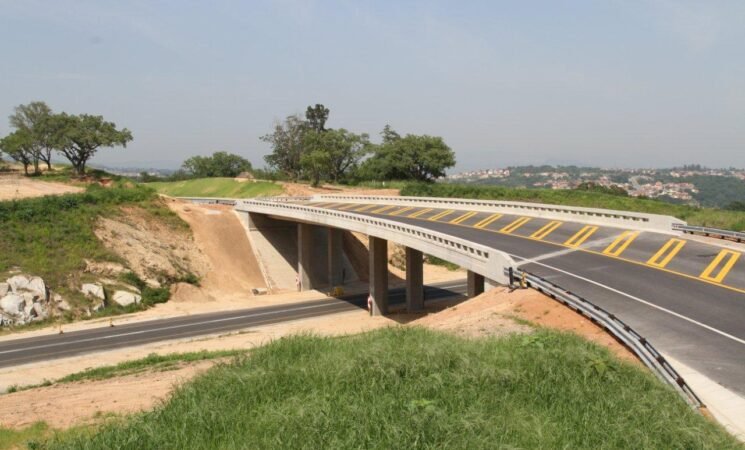20 June 2025, NIICE Commentary 11325
Samiksha Shewale
“Infrastructure is not just about roads and bridges — it’s about power.”
— Parag Khanna, Connectography
In an era defined by rapid globalization and aggressive geopolitics, infrastructure has quietly become the new battleground. Roads, railways, ports, and pipelines — often marketed as catalysts for development — are now deeply entangled with questions of sovereignty, national security, and global realignments. These development corridors, once seen merely as engines of economic growth, are now altering the very way we understand power, borders, and security. Welcome to the age of sovereignty in the shadows — where concrete paves over sovereignty, and development redrafts security maps.
The Rise of Development Corridors: More Than Just Trade Routes
At their surface, development corridors are linear infrastructure projects — highways, railways, energy pipelines, fiber optic cables — designed to connect resource-rich interiors to global markets. Think of China’s Belt and Road Initiative (BRI), Africa’s LAPSSET Corridor, or India’s North-South Transport Corridor. These aren’t mere economic investments; they’re strategic chess moves. As nations race to secure supply chains and influence regions beyond their immediate borders, development corridors emerge as tools of geopolitical leverage. Chinese investment in Africa and Central Asia, for example, often arrives wrapped in infrastructure loans — and leaves behind not only roads but long-term strategic dependency. According to a 2020 report by the Center for Global Development, 8 out of 68 countries participating in the BRI were at high risk of debt distress. But what makes these corridors more than just economic channels is how they reshape the very nature of sovereignty.
Corridors That Cross Sovereignties
In traditional international relations, sovereignty was absolute: a state had full control over its territory and decisions. But development corridors blur these boundaries. A foreign-built highway cutting through multiple countries, managed by private or multinational entities, often creates zones of influence that resemble transnational pipelines of power, not entirely national, not entirely foreign. Take, for example, the China-Pakistan Economic Corridor (CPEC). It cuts through Gilgit-Baltistan, a territory claimed by both India and Pakistan. While the project promises energy access and economic upliftment, it has simultaneously deepened regional tensions, leading India to repeatedly oppose it. For Pakistan, the project is both a lifeline and a liability, improving infrastructure but inviting deeper Chinese influence in domestic governance and even military coordination. This trend isn’t unique to South Asia. The Addis Ababa–Djibouti railway — constructed by China — now controls about 90% of Ethiopia’s external trade. If one country can influence your trade, your energy, your communication, is sovereignty truly yours?
Security: The Silent Passenger
Every corridor carries with it an army — if not of soldiers, then of surveillance. Strategic infrastructure projects often include dual-use technologies. Ports become naval bases, railways are used for troop movement, and fiber-optic cables allow for surveillance across borders. Let’s revisit Hambantota Port in Sri Lanka. Built with Chinese loans under the promise of prosperity, the port was eventually leased back to China for 99 years due to the country's inability to repay debt. This not only compromised Sri Lanka’s strategic autonomy but gave China a naval foothold in the Indian Ocean, a key chokepoint in global maritime trade. Security experts term this infrastructure colonialism — where the guise of development masks the extension of strategic reach. The late strategist Zbigniew Brzezinski once warned: “He who controls Eurasia controls the destinies of the world.” In today’s context, he who builds the roads across Eurasia may be doing just that.
Digital Corridors: The Invisible Frontline
Beyond rail and road, we’re now witnessing the rise of digital corridors — data centers, undersea internet cables, 5G infrastructure. These too are redrawing the global security map. The United States’ ban on Huawei wasn’t just about commerce; it was about who gets to control the future's communication highways. India’s rejection of Chinese telecom firms for 5G rollout similarly underscores how critical digital infrastructure has become for sovereignty. Nations are increasingly defining data sovereignty — the idea that digital information is subject to the laws of the country where it is collected. But when data flows through foreign-controlled cables and servers, enforcing that sovereignty becomes almost impossible. Hence, sovereignty is now both territorial and virtual — and development corridors stretch through both realms.
People in the Shadows: Whose Development?
As nations negotiate billion-dollar infrastructure deals, the human cost is often overlooked. Indigenous populations, farmers, and informal workers are displaced without adequate rehabilitation. Environmental assessments are hurried or bypassed. In Africa’s Great Rift Valley, for instance, the LAPSSET Corridor threatens fragile ecosystems and traditional ways of life. In India, the Delhi–Mumbai Industrial Corridor (DMIC), designed to be a global manufacturing hub, has raised serious questions about land acquisition and environmental sustainability. Who benefits when the corridor is complete? Local communities or international investors? Development, in this sense, becomes a double-edged sword — promising progress while displacing the very people it claims to uplift.
Sovereignty in the Shadows: A New World Order
We’re witnessing a profound shift in how the world organizes itself. No longer is power solely defined by military might or diplomatic reach. It is defined by who builds, who connects, and who controls the corridors of trade, energy, and information. This is sovereignty in the shadows — a form of indirect influence that’s harder to detect, but just as decisive. As countries lease land, outsource security, or depend on foreign tech infrastructure, they trade off slices of their sovereignty. Ironically, it’s often done voluntarily — in pursuit of development, growth, or strategic advantage. And it’s not always sinister. In many cases, infrastructure genuinely transforms economies. But it also transforms autonomy, security, and governance — often in ways that are not immediately visible.
Charting a Way Forward: Infrastructure with Integrity
So how do we protect sovereignty in an interconnected world? The answer isn’t isolation, but transparency, local accountability, and strategic foresight.
Countries need to:
- Ensure transparent infrastructure deals, with clear clauses about ownership, control, and dispute resolution.
- Insist on environmental and social safeguards, particularly for indigenous and vulnerable communities.
- Build regional cooperation, so that corridors become shared assets rather than geopolitical wedges.
- Invest in domestic capacity, especially in tech and digital infrastructure, to avoid long-term dependencies.
As author and economist Ruchir Sharma wrote: “Infrastructure is destiny. But who controls that infrastructure decides the future.”
Conclusion: The Road Ahead Is Political
Every road has a direction. Every corridor has a purpose. It’s time we recognize that in today’s world, development cannot be separated from diplomacy, and infrastructure cannot be isolated from sovereignty. We are all part of a new map — one where lines are not just borders, but belts and roads and cables and pipelines. The future will not be defined merely by who claims sovereignty, but by who controls the infrastructure that defines it. And that makes sovereignty not a fortress, but a flow — one that must be guarded not just by walls, but by wisdom
Samiksha Shewale is currently pursuing her International Electoral Management and Practices at the Tata Institute of Social Science, Mumbai, India.

